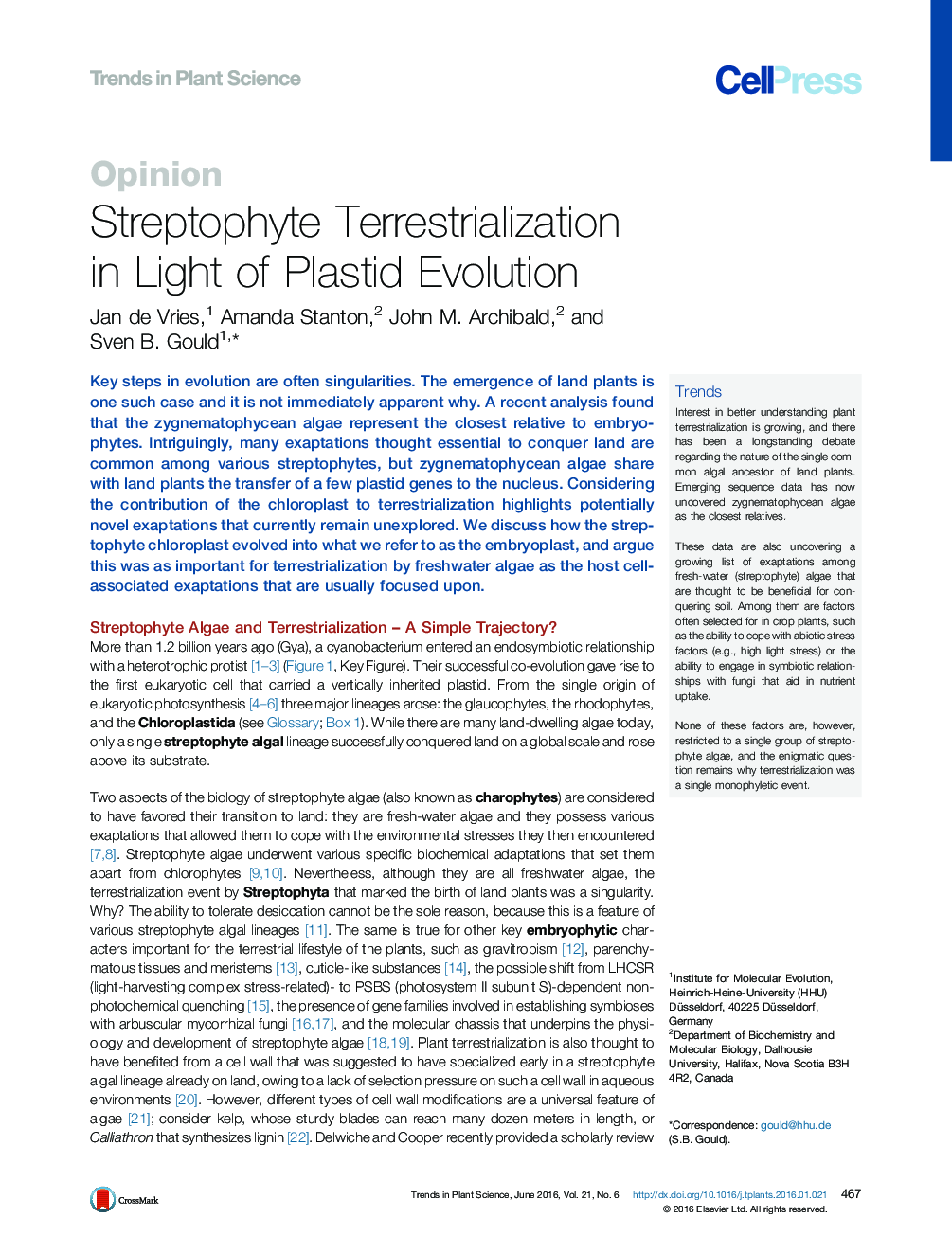| Article ID | Journal | Published Year | Pages | File Type |
|---|---|---|---|---|
| 2825706 | Trends in Plant Science | 2016 | 10 Pages |
Key steps in evolution are often singularities. The emergence of land plants is one such case and it is not immediately apparent why. A recent analysis found that the zygnematophycean algae represent the closest relative to embryophytes. Intriguingly, many exaptations thought essential to conquer land are common among various streptophytes, but zygnematophycean algae share with land plants the transfer of a few plastid genes to the nucleus. Considering the contribution of the chloroplast to terrestrialization highlights potentially novel exaptations that currently remain unexplored. We discuss how the streptophyte chloroplast evolved into what we refer to as the embryoplast, and argue this was as important for terrestrialization by freshwater algae as the host cell-associated exaptations that are usually focused upon.
TrendsInterest in better understanding plant terrestrialization is growing, and there has been a longstanding debate regarding the nature of the single common algal ancestor of land plants. Emerging sequence data has now uncovered zygnematophycean algae as the closest relatives.These data are also uncovering a growing list of exaptations among fresh-water (streptophyte) algae that are thought to be beneficial for conquering soil. Among them are factors often selected for in crop plants, such as the ability to cope with abiotic stress factors (e.g., high light stress) or the ability to engage in symbiotic relationships with fungi that aid in nutrient uptake.None of these factors are, however, restricted to a single group of streptophyte algae, and the enigmatic question remains why terrestrialization was a single monophyletic event.
